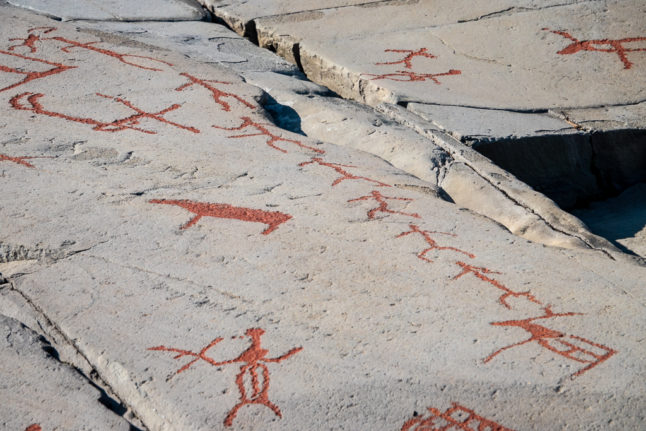On a summer weekend Stockholm looks like it has been the victim of a plague that wiped out the entire population except for 15 museum guards and a handful of tourists wandering around with puzzled expressions on their faces and maps of Oslo in their hands.
Swedes have abandoned their capital and gone off to commune with Nature and heed rural sounds.
The evacuation starts on the first Friday in May as I watch the neighbours moving back and forth between apartment and car schlepping portable coolers, grills and huge cartons of tinned ham and herring. And beer. On Sunday night the operation is reversed, minus the beer.
I asked my neighbors why they went through this process of loading and unloading the car every weekend. ”To be in Nature,” they replied, throwing sympathetic looks at the plight of this poor foreigner, stranded in the city as though behind enemy lines .
Nothing–not herring nor aquavit–is as vital to the Swedish soul as escaping to an island populated by fewer than ten people who hide in the woods peeking out at the other nine from behind trees.
I first became acquainted with this Rousseau-ist mania when I was a student in Paris, where I had a room in the Swedish House of the Cité Universitaire. On Friday afternoons, we foreign students, wearing black turtlenecks and bearing the existential burden, would head for the cafes of Saint-Germain-des-Prés to smoke strong cigarettes and discuss Being and Nothingness.
But the Swedish students, burdened only with backpacks, headed for the train station. Grabbing one by the strap on his knapsack I invited him to join us.
“I am going to the forest. I must walk in Nature,” he said in a tone as desperate as Garbo’s when she moaned, “I want to be alone.”
“I want to look at flowers and birds. ”
Swedes know about flowers and birds. When asked to identify certain objects of nature, I answer tentatively: “Bird?” A Swede will assure you it’s a yellow-bellied thrush.
Wishing to observe at first hand the object of all this passion, I accepted an invitation to spend a weekend with my neighbours at their country idyll somewhere in the paisley map of islands of the Stockholm archipelago. Visions of a lazy day in a hammock with a book vanished when, right after breakfast, the first of several walks in the woods was proposed.
Here is what I learned about Nature:
Nature provides no benches for resting on when you’re ready to collapse after hours of tramping about in a semi-crouch to find 12 wild strawberries.
Nature does not provide running hot water. Country life means preserving the breakfast dishwater as though it’s liquid gold. You go to the stream to rinse off your dirty lunch dishes in order not to contaminate the breakfast dishwater.
Nature does, however, provide pollen that makes you sneeze and bugs that make you itch.
Worst of all, in Nature you can’t get a latte.
Here’s my dirty little secret. I like cities. I decided never again to leave the urban jungle to return to that state of nature that human genius spent thousands of years struggling its way out of.
And when my neighbours return at summer’s end and parade their bronzed bodies before my pale eyes, I’ll try not to look smug when I tell them I spent the summer on my sofa reading Proust.
A version of this article originally appeared in Vis.A.Vis magazine.



 Please whitelist us to continue reading.
Please whitelist us to continue reading.
Member comments